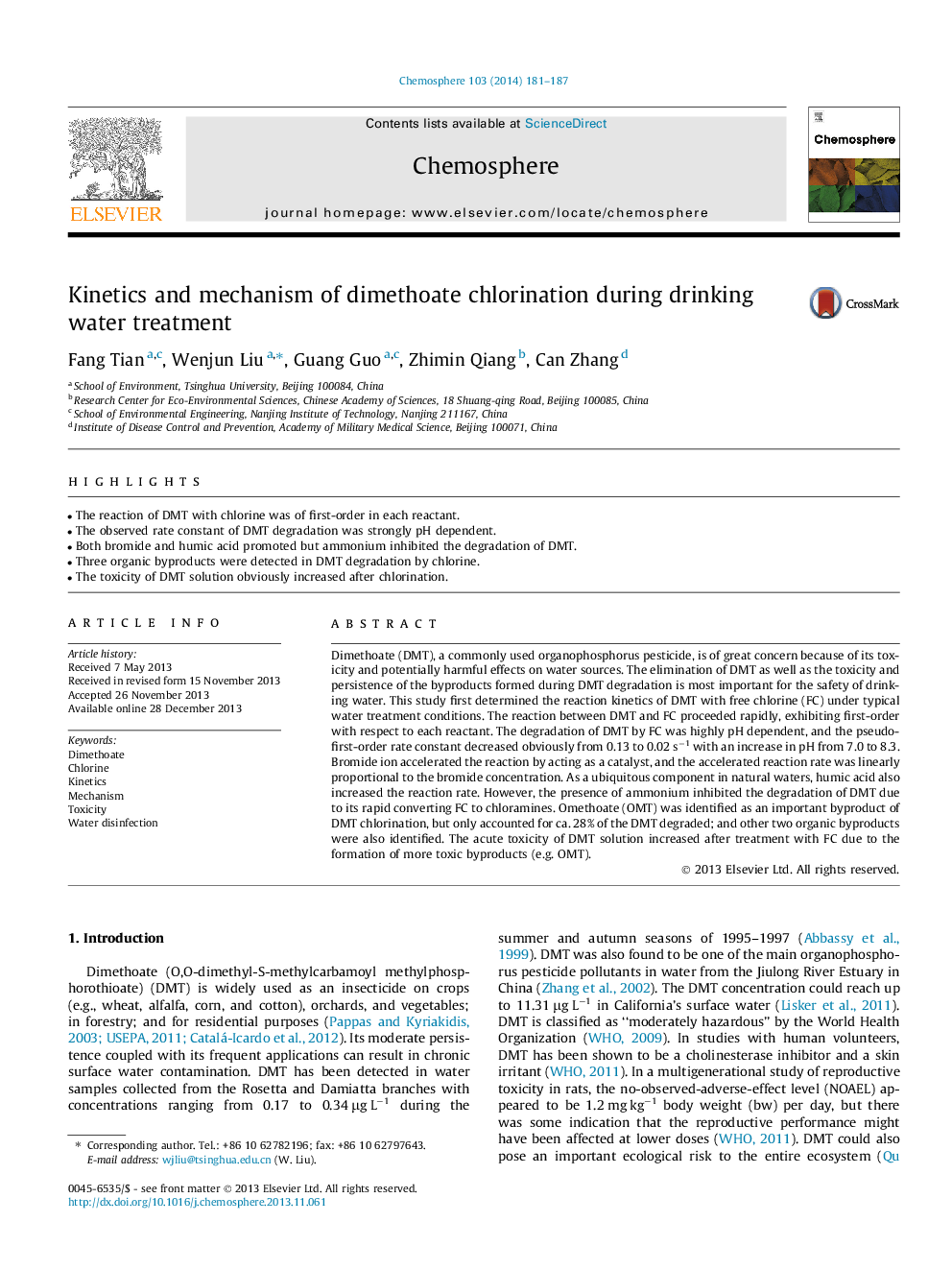| Article ID | Journal | Published Year | Pages | File Type |
|---|---|---|---|---|
| 6309258 | Chemosphere | 2014 | 7 Pages |
Abstract
Dimethoate (DMT), a commonly used organophosphorus pesticide, is of great concern because of its toxicity and potentially harmful effects on water sources. The elimination of DMT as well as the toxicity and persistence of the byproducts formed during DMT degradation is most important for the safety of drinking water. This study first determined the reaction kinetics of DMT with free chlorine (FC) under typical water treatment conditions. The reaction between DMT and FC proceeded rapidly, exhibiting first-order with respect to each reactant. The degradation of DMT by FC was highly pH dependent, and the pseudo-first-order rate constant decreased obviously from 0.13 to 0.02Â sâ1 with an increase in pH from 7.0 to 8.3. Bromide ion accelerated the reaction by acting as a catalyst, and the accelerated reaction rate was linearly proportional to the bromide concentration. As a ubiquitous component in natural waters, humic acid also increased the reaction rate. However, the presence of ammonium inhibited the degradation of DMT due to its rapid converting FC to chloramines. Omethoate (OMT) was identified as an important byproduct of DMT chlorination, but only accounted for ca. 28% of the DMT degraded; and other two organic byproducts were also identified. The acute toxicity of DMT solution increased after treatment with FC due to the formation of more toxic byproducts (e.g. OMT).
Related Topics
Life Sciences
Environmental Science
Environmental Chemistry
Authors
Fang Tian, Wenjun Liu, Guang Guo, Zhimin Qiang, Can Zhang,
